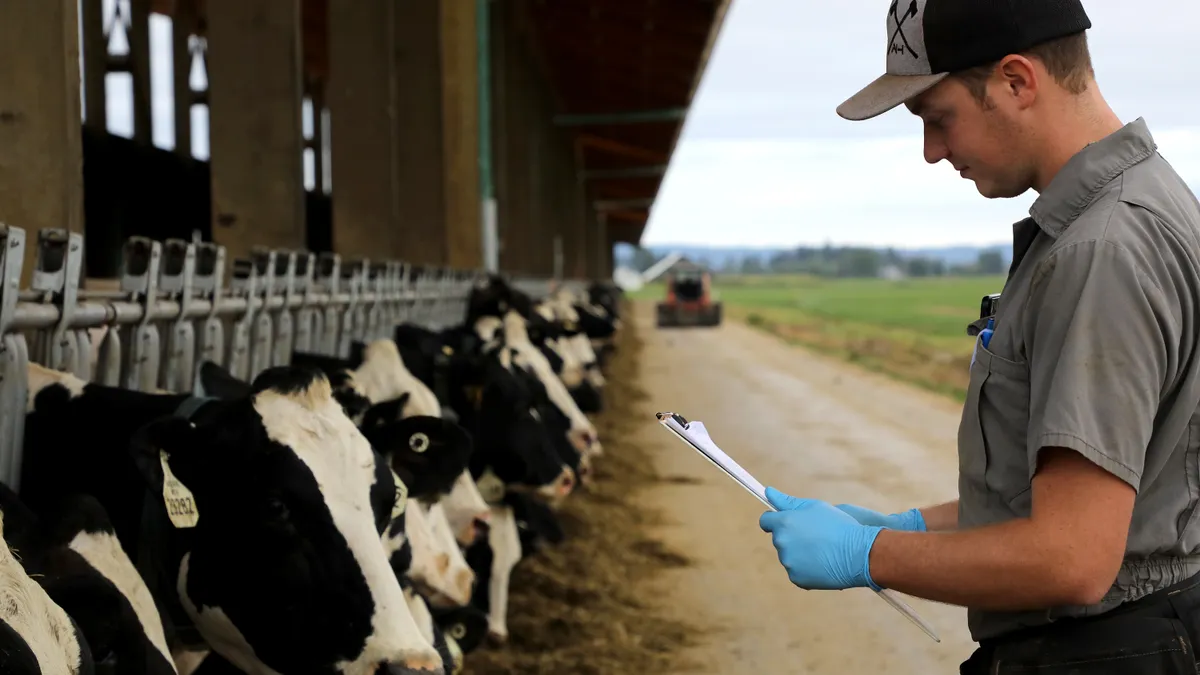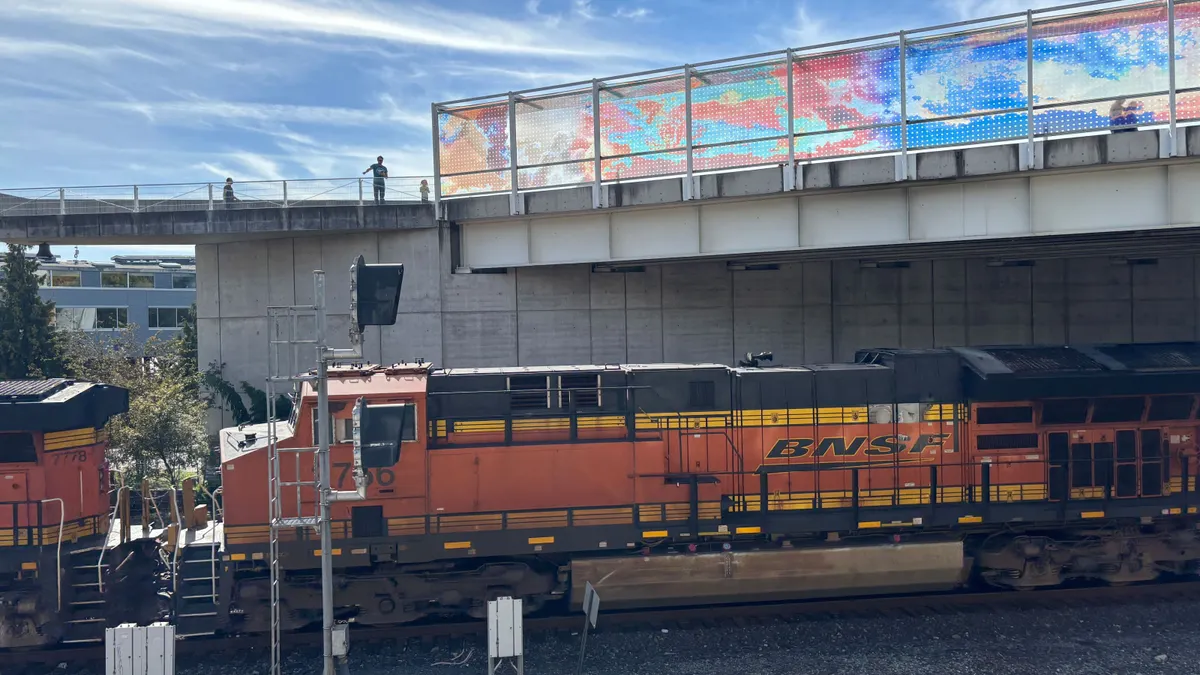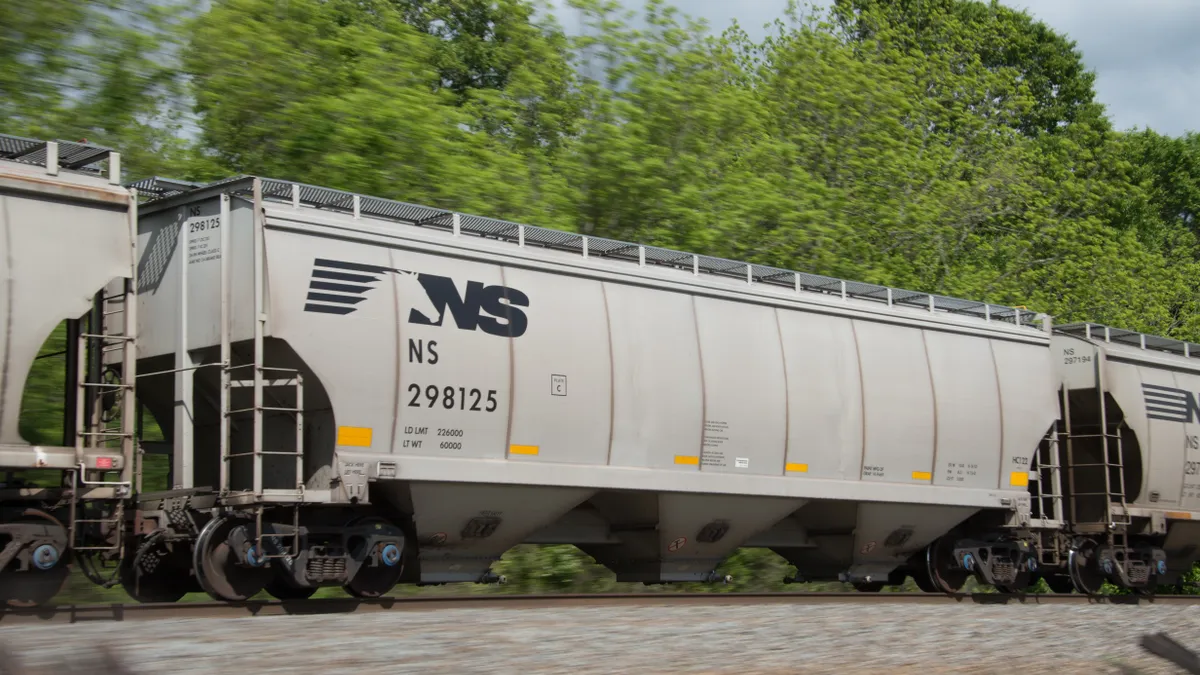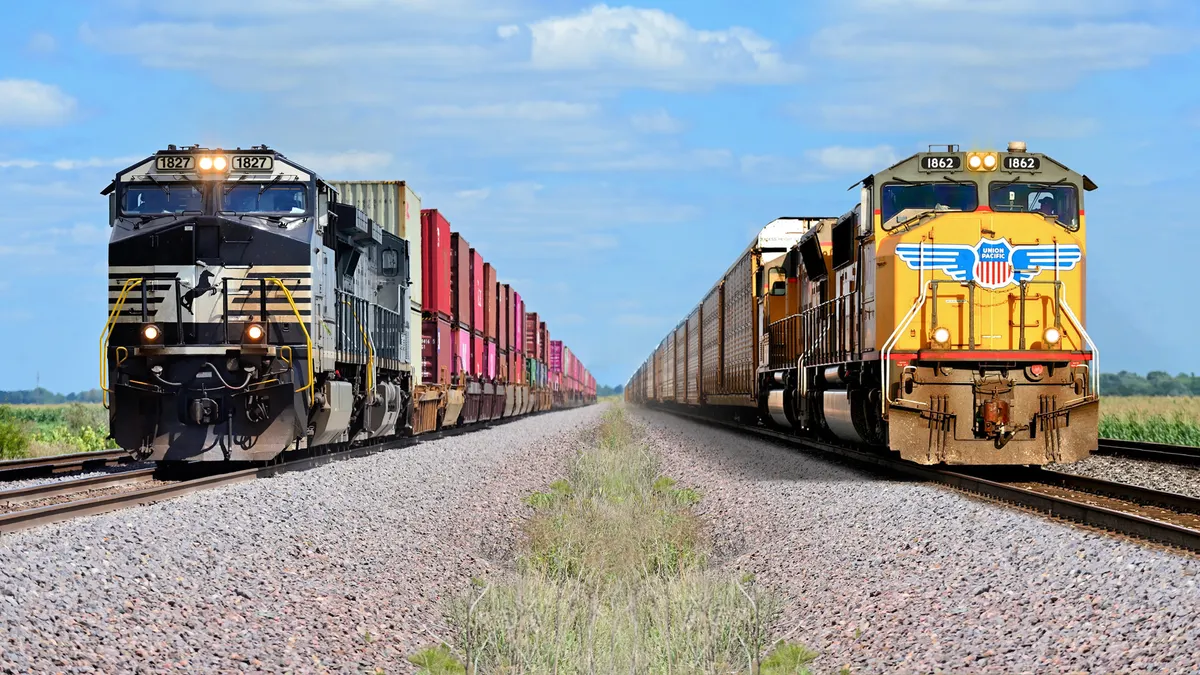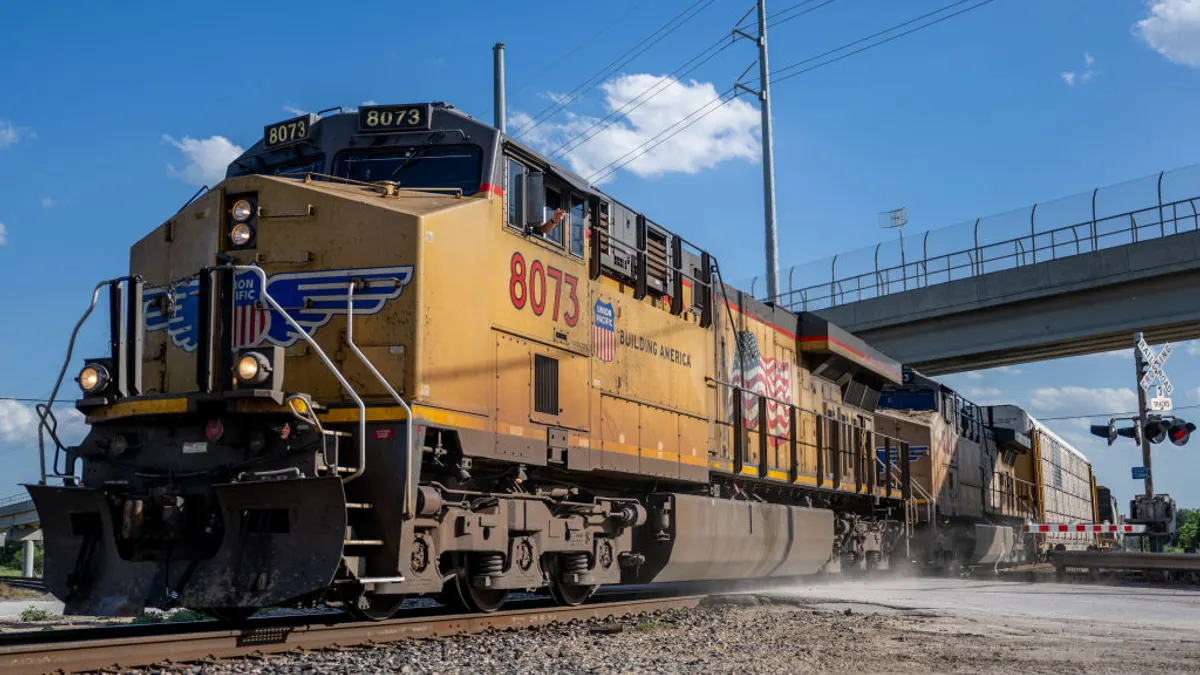Aggregated shipments. More rail availability. A "fast lane" or "green lane" for departing vessels carrying more exports. The International Dairy Foods Association, the Port of Los Angeles and CMA CGM have ideas for how to squeeze more U.S. dairy exports through strained supply chains.
The industry group, the port and the shipping carrier formed the Dairy Exports Working Group last week to solve problems they say are hampering exports from the interior of the country and through West Coast ports.
"Each improvement we make will highlight another obstacle, another piece we can address that we can improve," said Michael Dykes, president and CEO of IDFA, in an interview with Supply Chain Dive on Tuesday. "We can take that throughout the system."
Americans' love of cheese is behind an increase in dairy consumption within the country, Dykes said. But exports make up more than 16% of U.S. dairy business, and supply chain woes are costing companies millions of dollars and damaging exporters' credibility among global customers, he said.
Delays and average dwell times increased last quarter at the ports of Los Angeles and Long Beach, according to FourKites. Dwell times were 6% and 4% higher than the 2021 average at the points of destination and loading, the supply chain visibility platform said. And railroad staffing challenges due to the fast-spreading omicron variant added to labor constraints that were already affecting rail service last quarter.
Port delays and rail limitations, along with limited warehouse space and container availability, mean dairy exporters must airfreight more product than ever before — sometimes at 20 times the cost — to honor their contracts, IDFA says.
U.S. dairy exporters have been hard hit by supply chain issues and trade policies, said Port of Los Angeles Executive Director Gene Seroka in a statement. The working group will find "solutions that will benefit not only the dairy industry but all American exporters," Seroka said.
The group is exploring ways to aggregate dairy exports from multiple suppliers to ensure more consolidated and attractive bookings. Amid both rail and ocean shipping congestion, the group wants more rail availability for non-coastal dairy exporters and a "fast lane" incentive for vessels to depart San Pedro Bay full or with fewer empty cargo containers.
"From a business perspective, these carriers are looking for the fastest turn they can make at the ports, to go back to reload and refill," Dykes said.
The concept? CMA CGM agrees to wait longer at port to take containers back filled, the dairy exporters commit to having the filled containers ready at the port when the vessel arrives, and the Los Angeles port dedicates a crew to load the exports onto the ship.
"Clearly, if we can make it work there, we can make it work at other ports," Dykes said. "And hopefully, you'd like to work with other carriers."
Initial interest from the Port of Los Angeles and CMA CGM led the dairy industry to work with them first, Dykes said. He spoke Monday with Danny W. Wan, executive director of the Port of Oakland, a major agricultural export port, and is reaching out to the Port of Long Beach and other ocean carriers and IDFA members about joining the effort.
Other ideas floated by the group include more defined agreements for exporters using empty containers languishing at U.S. ports and guarantees to fix and surpass ghost bookings. Those occur when exporters book space on multiple ships for the same products, Dykes said. Better data sharing will help, too, he said.
The group's advantage in solving the dairy export problems is having "all the right players in the room," said Ed Aldridge, president of CMA CGM and APL North America, in a statement.
"This collaborative partnership will enable us to quickly implement innovative solutions designed to not only help the dairy industry with current supply chain challenges, but also to pave the way for the future," Aldridge said.
Stephanie Thomas, associate professor of practice of supply chain management at the University of Arkansas, commended the push for better collaboration along the dairy supply chains.
"Any time you can improve processes, create efficiencies within processes, that's a good thing," Thomas said. "And any time you can limit the number of empty hauls and extra miles and use more efficient modes of transportation or ways that are more sustainable, none of that is ever a bad thing."



